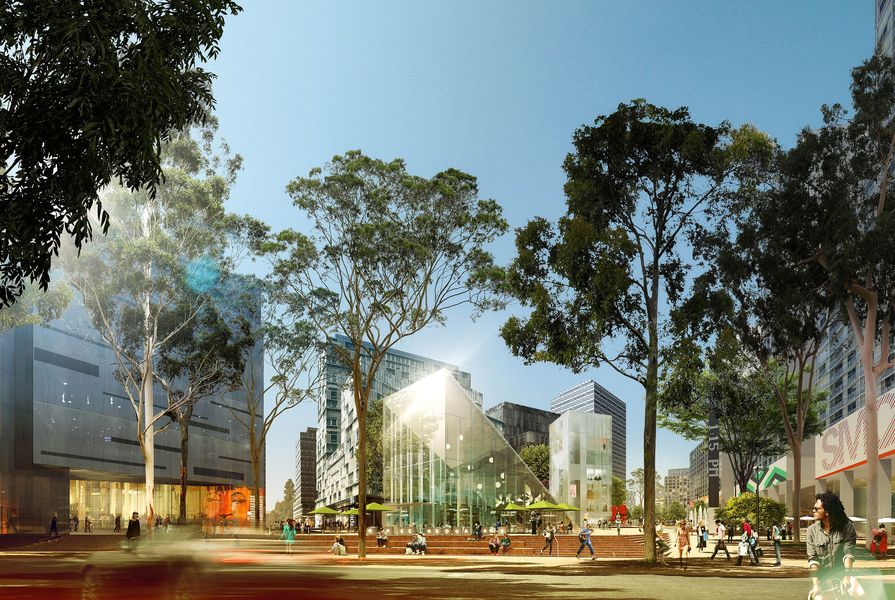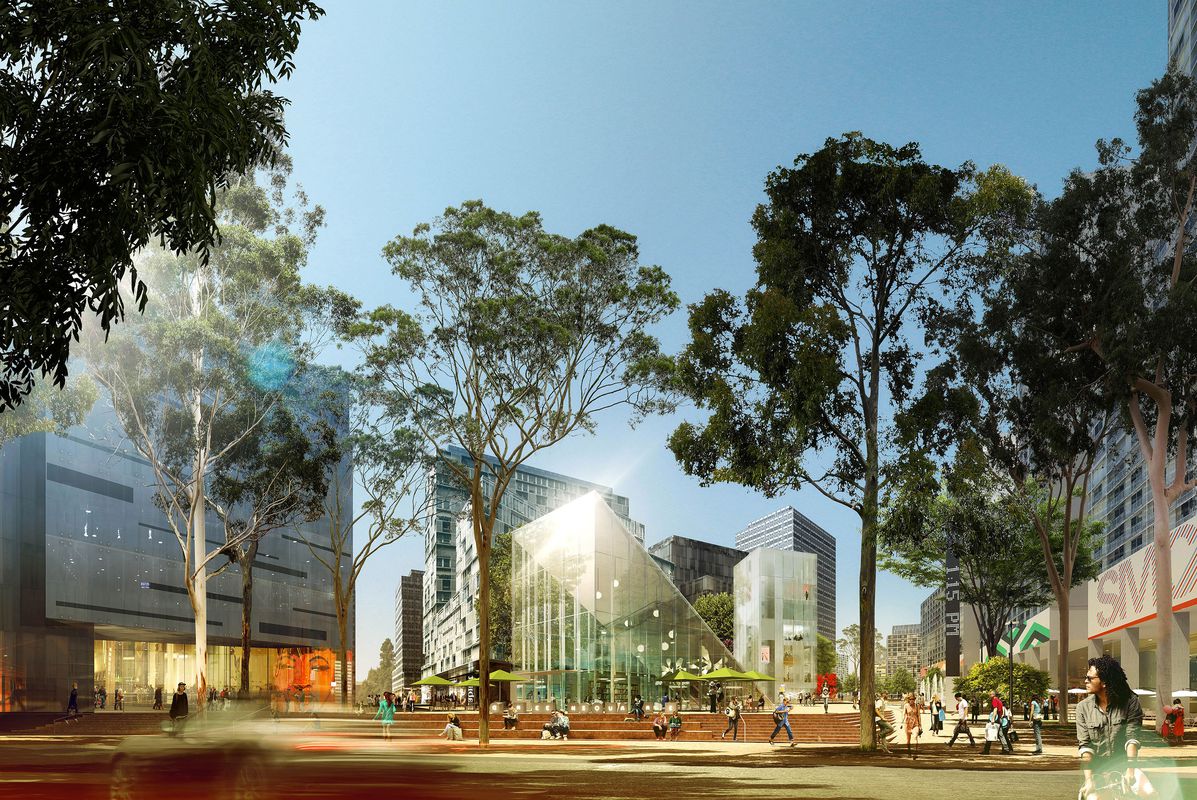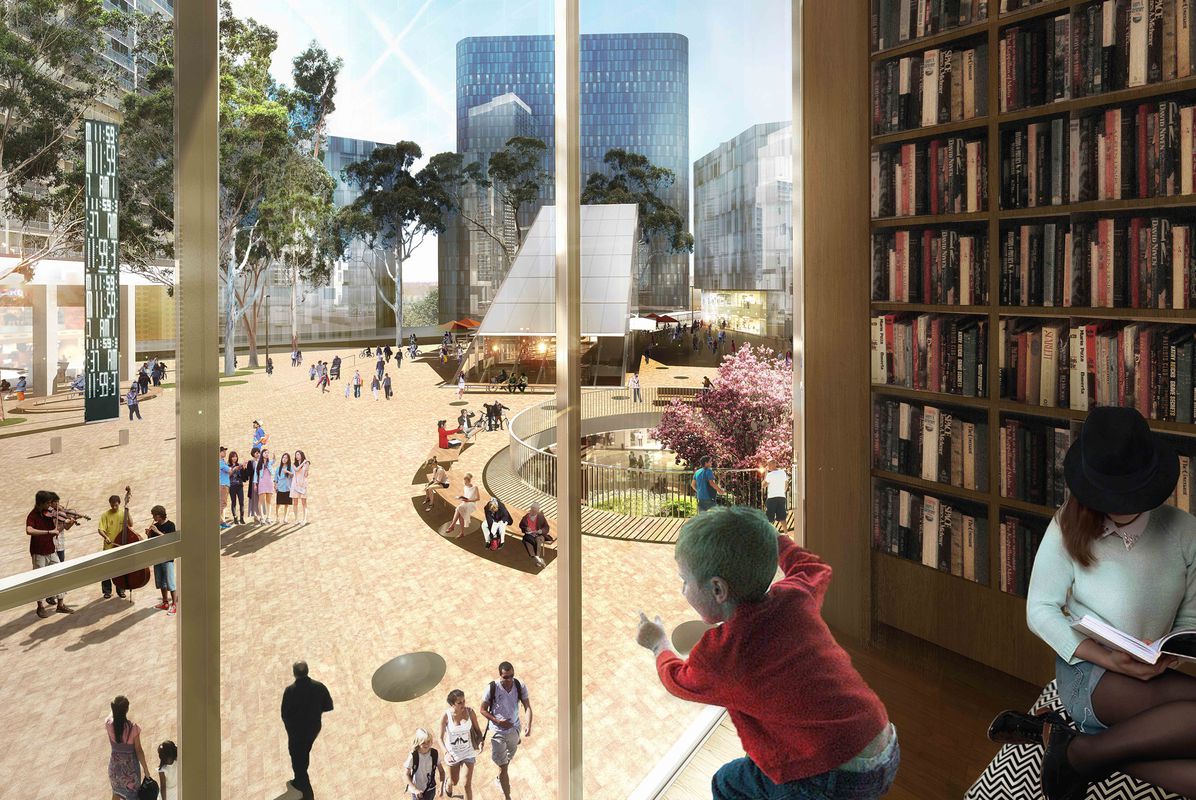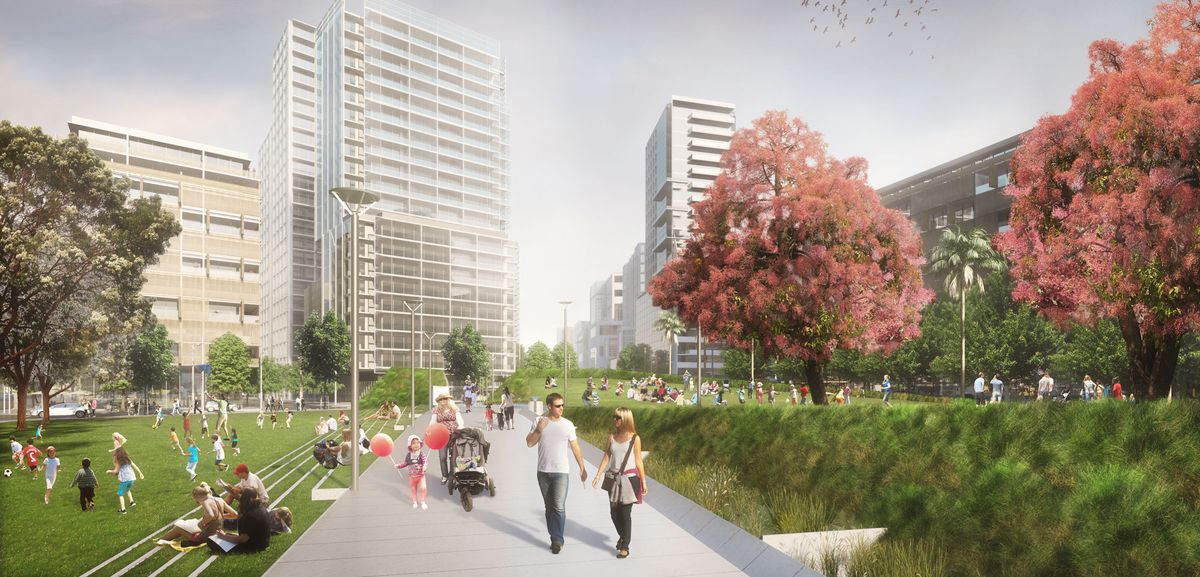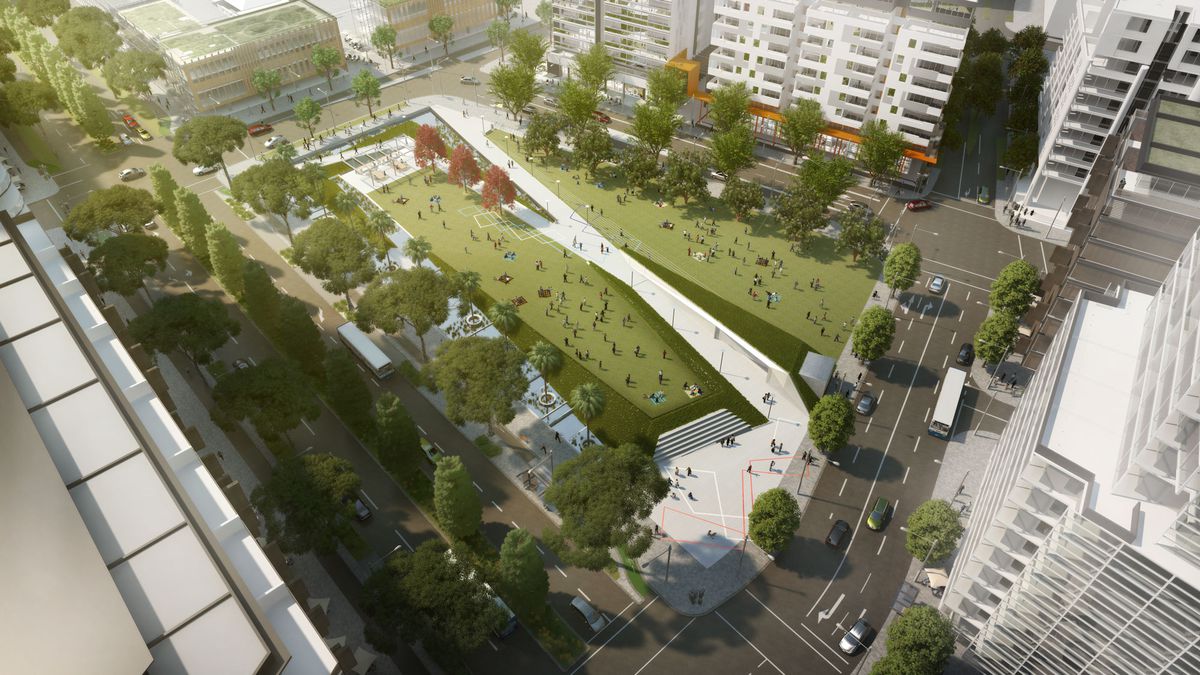The suburbs were the urban living format that defined Australian cities in the 20th century. Inevitably they’ve had their champions and detractors. Suburbia now has a new format in the medium-to-high-density residential spaces that are being rapidly built in previously industrialised areas.
This new urban ecology will bring with it new rhetorical possibilities for reverence, disgust, indifference and interest. The Green Square urban renewal area, which encompasses Zetland and Waterloo along with parts of Alexandria and Rosebery, is a paradigm in this sense. It is tipped to become the most densely populated area in Sydney by 2030.
The once-dominant industrial infrastructure of Green Square now has a less odorous, brighter and more glossy feel, which caters to a new demographic. The cultural history typical of the dominant mix of Anglo and European migrants in the Sydney suburbs of the 20th century is no longer the norm.
While English is still the most common language spoken at home, 45.7% of residents in Green Square and City South Village speak a language other than English at home. Chinese and “other Asian” languages make up 25.9% of this 45.7%.
The Federation cottage and its human equivalents are more likely to appear exotic in these contexts than the generically flashy apartment blocks with their red-brick simulacrum, coloured feature walls and laser-cut cladding.
Residents are unlikely to have a long history in the area. As a result, they lack the nearby family and neighbourly connections to care for children and animals.
This in part explains the pet barns and soon-to-be-opened daycare centres that are standard in the area. Rather than getting maintenance kicks by attacking the lawn with a mower, the area’s inhabitants are more likely to be found going to work on their physique in one of the many late-night gyms.
Drying Green Park by McGregor Coxall.
Subtle variations relieve the sameness
Although Green Square might seem homogeneous from the window of a passing car, repeated walks through the area allow key differences to emerge from the background of sameness.
The area surrounding Alexandria Park, north of McEvoy Street and west of Wyndham Street, is thoughtfully scaled and features the natural amenity of a long-established park with its large fig trees and exemplary combination of formal and informal recreational spaces.
The area to the east, approaching South Dowling Street in Zetland, Waterloo and North Rosebery, is a different story. Zoning restrictions on building height creep up from 12 metres to 18 metres. Some sections bordering South Dowling are zoned at 24 metres. It’s a subtle but significant shift. The taller buildings lack a sympathy of measure with the trees and open space set aside for public usage.
Despite the difference in vertical profile, some of the garden city principles central to the development of 20th-century suburbia are preserved in these new developments. The City of Sydney ought to be commended on setting aside areas such as Tote Park, Mary O’Brien Reserve and Joynton Park. These feature a variety of public amenity and sensitively landscaped gardens with native plantings.
Considering the fragile balance between large buildings and open space, it’s imperative that any design decisions about the future of these parks are made with the residents’ interests in mind. Likewise, the avenues of mature lemon-scented gums along Wolseley and Morris Groves have a positive impact on the visual amenity of the area that, in such a context, is disproportionate to their physical size.
In with the new, so what becomes of the old?
The rapid increase in new housing has made heritage a matter of concern for the City of Sydney. It has released a comprehensive study of the area’s industrial heritage and proposed 62 new listings. The listings will have a lasting consequence not only for the history of the area but for its character as it continues to develop.
The majority are buildings that date back prior to 1970, with Harry Seidler’s Q Store on Bourke Road the most recent. Red brick buildings in Art Deco and Functionalist styles fare particularly well. These will now, in all likelihood, outlast many of the post-1970s warehouses and showrooms currently in use.
Perversely enough, ruins can be among the most resilient types of architecture. In the future, this unusual combination of older red brick facades with the new residential developments emerging from their shells might be subject to yet another set of heritage orders to ensure their postmodern aesthetic contradictions are maintained for future generations.
While at first glance it might look like the ideal city, on closer inspection the Green Square urban renewal area reveals many different shades. Its legacy awaits the telling of a multitude of stories.
This article was originally published on The Conversation. Read the original article.

